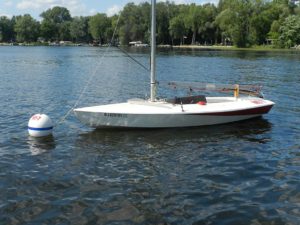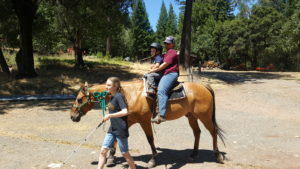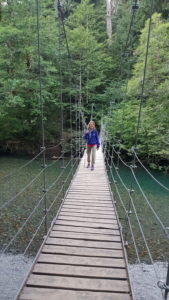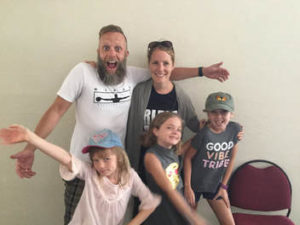This is one of those topics that, in an ideal world, would not need special attention. But since we at Doublevision blog believe strongly in educating the public and bringing awareness to blindness related issues, this post is necessary. All these points are based on real actual situations that have happened to us or someone we know.
“How did you get here?”
In a society that highly values independence, most adults have their own personal vehicle and cannot fathom otherwise. For those who cannot drive, alternate modes of transportation are necessary, including public transportation, Uber, rides with family / friends, and walking. We often need to put more thought into our transportation than simply pulling out the car keys, but we manage to make it work.
Joy recently had this experience at a work training in SoCal. She walked into the training session where a handful of other teachers were sitting, waiting for the morning to begin, and the trainer noticed her guide dog. After saying hello, she immediately asked how Joy had gotten there. While other teachers were met with “How are you?” or “Good to see you.”, Joy was asked to explain her mode of transit while the group sat listening.
(Note: If you are truly concerned with a person’s transportation needs, kindly offer a ride.)
“Do you know where you’re at?”
Chances are, yes, the person holding the cane or guide dog harness is fully aware of their location and surroundings. Our friend Keith, fellow VIP, recently had this experience with a stranger at a train station marching up to him and asking if he knows where he’s at. Keith, being the light-hearted guy that he is, was tempted to reply. “Do you mean like emotionally?”
(Note:: If someone looks lost, blind or sighted, the kind thing to do is say, “Hello, do you need help with directions?”)
Silently wave and keep going, hoping they sense your presence and identity.
Waving is an automatic social gesture that comes so naturally that it is often hard to control the wave and dash mentality. But it is possible to both wave and offer a short greeting. I honestly did not realize how many waves I was missing until my daughter was old enough to talk, and started asking things like, “Why did you not wave back to the neighbors when they passed by us?” It may not seem like a big deal to wave at a person who can’t see you anyways, but it matters. Social customs of greeting one another are part of how we as humans feel connection in our society. On the flipside, no need to shout and wave obnoxiously to ensure the person has your attention.
(Note: A simple, “Hey, it’s John. How’s it going?” works wonders.)
“Are you blind?”
Asking someone with a cane or a guide dog whether they are blind is like asking someone in a wheelchair if they are paralyzed. It’s not how anyone wants to be greeted, and is a very awkward conversation starter. To clarify, we are usually open to questions, especially if someone is truly curious about vision loss, but a blunt question like that right off the bat feels out of place.
How do most people with sight loss want to be greeted? The same as most people, with warmth, kindness, and a few words.









